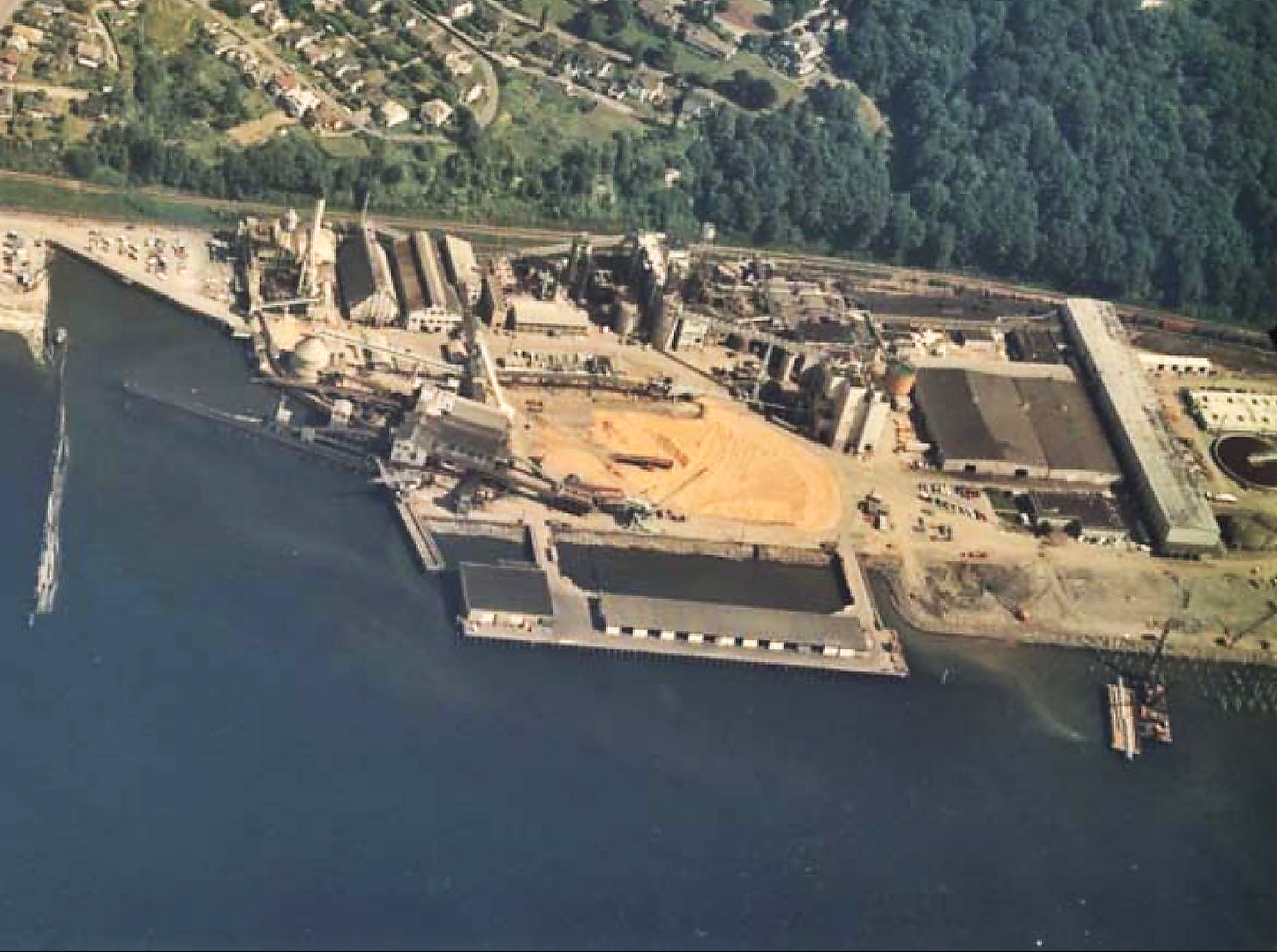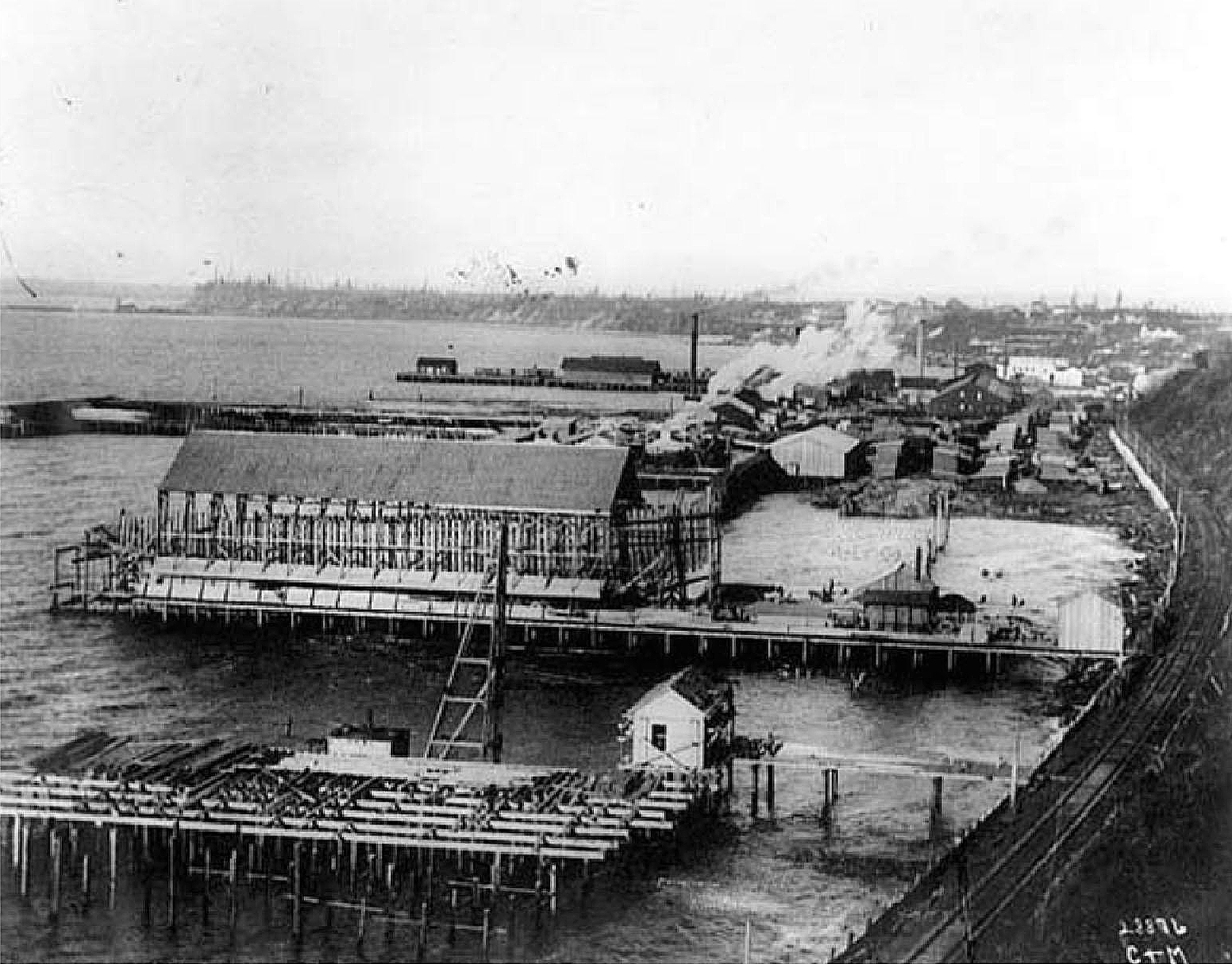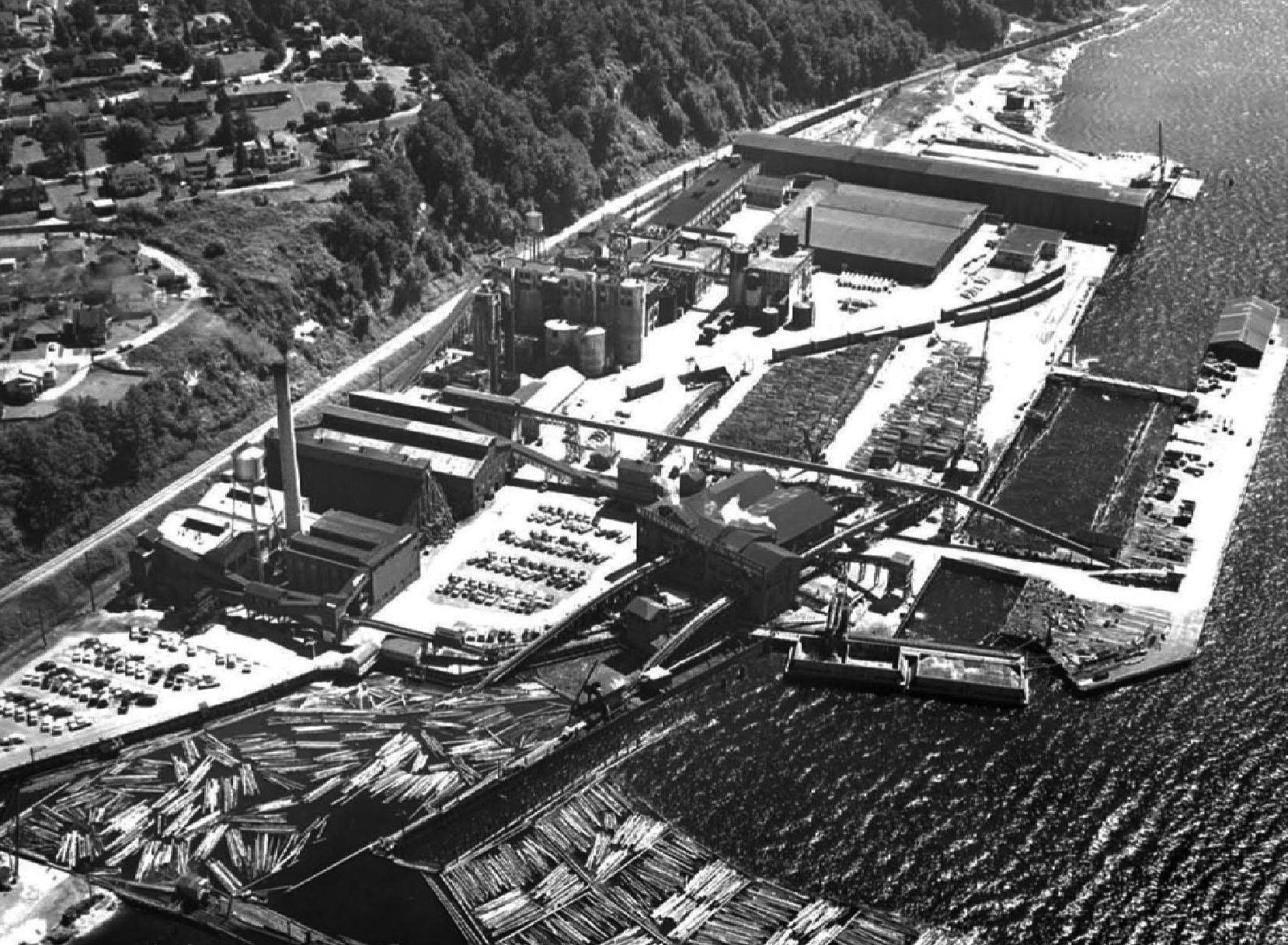
Weyerhaeuser Mill A site, 1977
The Washington Legislature has awarded 20 million dollars to clean up the Weyerhaeuser Mill A site on Port Gardner Bay, part of the Port of Everett’s waterfront in Snohomish County. This grant is the latest in a series awarded to the Port to advance cleanup of the historically contaminated Port Gardner Bay.
Port Gardner Bay is part of the Puget Sound Initiative. This initiative allows us to focus on priority bays within the Puget Sound to coordinate multiple cleanups at once. It also helps the cleanups to be done more quickly and cost effectively. We’re working with local, state, and federal agencies, local Tribes, businesses, and property owners to restore the waterfront by cleaning up old industrial sites and restoring waterfront areas. This benefits fish, animals, and people.
The Weyerhaeuser Mill A site is one of the larger cleanups for Port Gardner Bay and Puget Sound.
Environmental justice assessment for state grant
The Healthy Environmental Act for All, Washington’s environmental justice law, empowers us to conduct environmental justice assessments when we’re planning significant actions. This includes the $20 million state grant investment for the Weyerhaeuser Mill A cleanup site.
Seeking feedback to help our assessment
We would like to hear from community members who will be directly impacted by the $20 million state grant investment for the Weyerhaeuser Mill A cleanup. This includes answering questions and helping us identify communities who might want or need engagement. If you would like more information about the environmental justice assessment or have questions, please contact Becky Dilba, the public outreach coordinator for the Headquarters Toxics Cleanup Program.
Cleaning up a historical saw and pulp mill
Everett waterfront, about 1900
The Mill A site is part of the Port’s South Terminal. From the 1890s to the early 1980s, it was used for sawmill and pulp mill. The Port of Everett purchased the property in 1983 and developed it for use as a log yard. It was used for log handling until the mid-2000s. The site is currently a cargo terminal.
Samples from neighboring marine sediments contain a large volume of wood waste, as well as contaminants including metals, polychlorinated biphenyls (PCBs), polycyclic aromatic hydrocarbons (PAHs), phenols, and dioxin/furans. Upland contaminants include metals, PAHs, petroleum, PCBs, several semi-volatile organic compounds (SVOCs), and volatile organic compounds (VOCs).
Weyerhaeuser Mill A around 1959.
The site requires both in-water and uplands cleanup. Ecology, the Port of Everett, and Weyerhaeuser signed a cleanup agreement, Agreed Order 8979, in 2012. In-water sediment sampling started in 2015, and upland sampling (soil and groundwater) began in 2016. The investigation is on-going. An interim cleanup action in a part of the in-water area in 2016 and 2017 removed contaminated sediment and wood debris to increase ship access to the terminal. In 2025, the Port completed an uplands interim action for stormwater system upgrades to prepare for more cleanup.
Funding dredging and a disposal facility
We finished the Cleanup Action Plan for the in-water cleanup in November 2024. The Port is working on engineering the details of cleanup construction according to the cleanup action plan. The in-water work is estimated to cost $200-$300 million and will take more than four years to complete. The current estimated start of cleanup work is the 2027–28 in-water work window (in-water work must be done at specific times to protect fish).
The in-water cleanup is a combination of dredging, putting dredged material into a confined disposal facility, in-water capping, and monitored and enhanced natural attenuation in areas not dredged. Enhanced natural attenuation is adding clean material that helps dilute the contamination over time.
Building the in-water confined disposal facility is a large part of the project.
The awarded Remedial Action Grant funds will provide the Port a state match of 50% to advance the work at Mill A. These funds will allow the Port to move forward with the first stages of dredging and constructing the disposal facility.
Economic benefits
The Weyerhaeuser Mill A cleanup site is in the Port of Everett Seaport. The Seaport supports more than 40,000 jobs in the region and $250 million in state and local taxes. In fact, 60% of all jobs in Snohomish County are tied to international trade. This cleanup is an important first step in the Port being able to meet future commerce needs. The in-water cleanup will remediate more than 400,000 cubic yards, or the equivalent of 40,000 dump truck loads, of contaminated sediment. Without the Mill A cleanup, the future of the seaport could be at risk. This would also impact associated jobs and the ability to contribute to the local economy.
Port Gardner
Correction, July 28, 2025: We will not be holding a public comment period for the draft environmental justice assessment.

